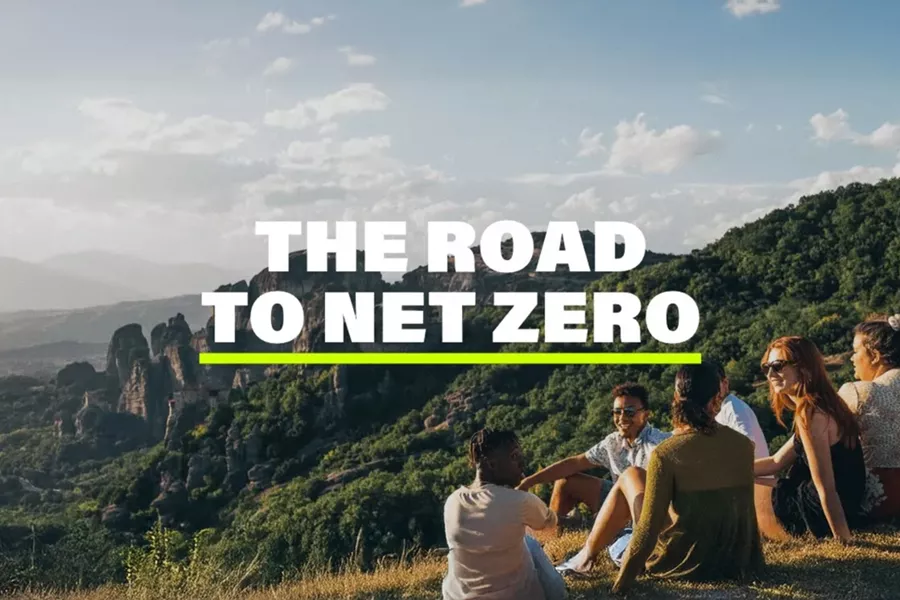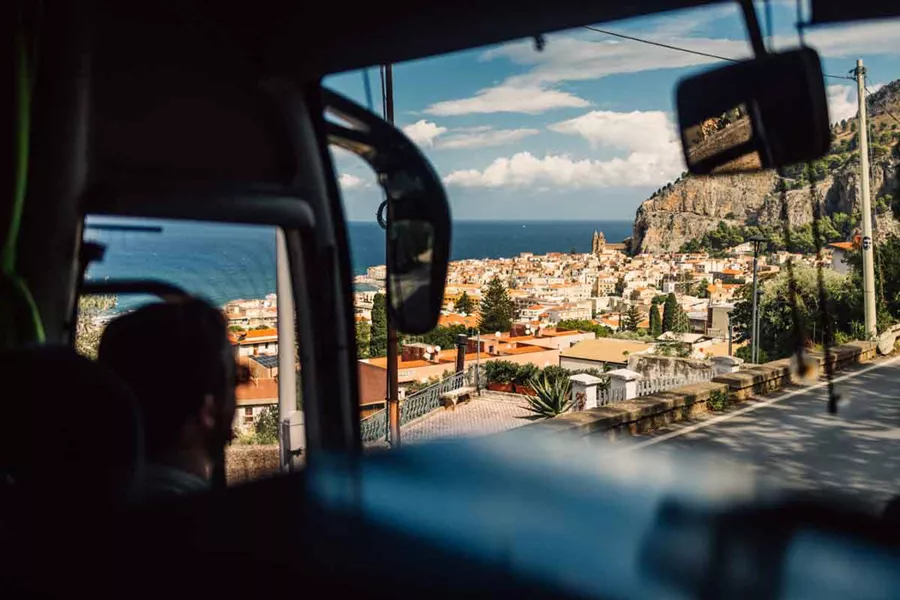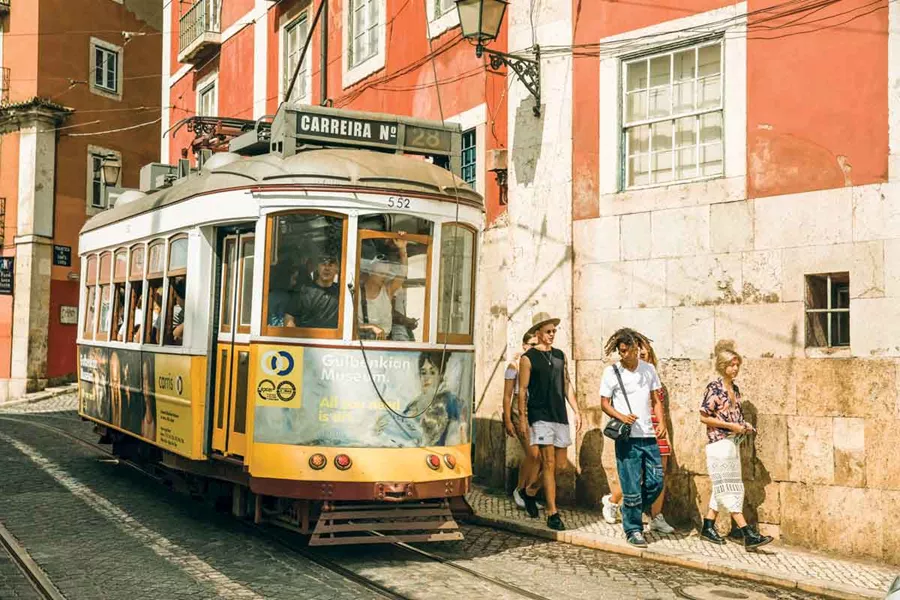© Copyright 2025 Contiki. All Rights Reserved. MAKE TRAVEL MATTER® is a trademark of The TreadRight Foundation, registered in the U.S. and other countries and regions, and is being used under license. Contiki Holidays Limited, Travel House, Rue du Manoir St Peter Port, Guernsey, GY1 2JH, Reg No: 50681
4 steps to Climate Action
It won’t happen overnight, but we’ve made a commitment to learn and adapt as human behaviour, technology and innovations do the same over time.
Measure
Keeping a close eye on the emissions that come from our trips (and wider business operations.)
Reduce
Backed by science-based targets, we’ve set up a Carbon Fund to help us put our money where our mouth is.
Restore
Investing in nature-based carbon removal solutions, and the conservation efforts that work towards restoring our planet.
Evolve
Continuing to learn from others, to invest in new tech and to support our industry’s transition to a low (or no) carbon future.
What do we mean by science-based targets? 🔬
In a nutshell, science-based targets help us make sure we’re doing the right things, doing enough of the right things, and that we’re, you know, actually DOING the right things.
Aligning with the scale of reductions required to keep global temperature increases below 1.5 degrees, these targets are verified by the Science Based Targets initiative (SBTi) – the hallmark of reliability when it comes to reducing carbon emissions. In 2022, our parent company The Travel Corporation became the first tour company to operate with validated science-based Net Zero targets in tow.
Reducing your emissions while you travel
Wanna help? We knew you would (and that’s why we love you.) Here’s how you can reduce your carbon footprint on the road:
Frequently Asked Questions
Your search for ""
clear searchHow does travel contribute to climate change?
Whenever we start a car or jump onto an airplane, we emit harmful emissions into the air, known as greenhouse gas emissions (GHGs). GHGs are caused in part by the burning of fossil fuels (coal, oil and natural gas) to keep our gas tanks full and our fossil-fuel based transportation system moving. GHGs trap heat from the sun within our atmosphere and the more GHGs that we emit into the atmosphere, the more heat is trapped – warming our planet.
What is a carbon footprint?
A carbon footprint encompasses the total amount of carbon that was emitted into the atmosphere to provide a product or service.
How did you calculate the carbon footprint from my trip?
Contiki worked with a third-party consultant to measure the carbon footprint of our trips. Here’s what we considered in scope:
- Transfers: any transportation provided as part of the trip
- Meals: any included meals as part of the trip
- Accommodations: all accommodations included within the trip.
We took a regional approach to measuring these emissions, to ensure country and regional specific emission factors were used where possible. We will review and update the carbon footprint of our trips every three years using our custom trip emission calculator.
Here’s what we considered out of scope and will not be included as part of our trip carbon footprint
- Traveler’s air travel to and from the destination
- All pre and post services not included in the price of the trip
- Emissions produced by facilities or buildings we visit on our trips (ie. museums). These emissions are considered the responsibility of the facility as determined by internationally accepted principles for emissions accounting.
- Meals purchased by the traveler
What else is Contiki doing to reduce the carbon footprint of its trips?
We’re taking several steps to reduce the carbon footprint of our trips:
- Our Gasthof Schöneck in Hopfgarten and our Chateau de Cruix in France are powered by 100% renewable energy.
- We use the most fuel-efficient Euro 6 coaches throughout Europe and coaches in other regions meet or exceed efficiency standards. Our Contiki Europe coaches are fitted with rooftop solar panels to lengthen the lifetime of the batteries.
We’re implementing food waste management systems at our special stays, Gasthof and the Chateau to measure and reduce our food waste.
- We’re developing more “closer to home” staycation trips for travelers who want to skip a plane ride and travel local.
- Where possible, we’re opting to include travel by rail instead of short-haul flights. Trains have a smaller carbon footprint than aeroplanes and you’ll get a real taste of traveling through the country.
- We’ve launched a new vegan-friendly itinerary and offer vegetarian meals on all our trips – just request this at the time of booking!
- We’re working with partners to increase the use of local food products, reducing GHGs associated with transportation and increasing local food security.
- We’re assessing the use of biofuels for our coaches within Europe.
- We’re working with the World Travel and Tourism Council and ABTA on producing road maps for the groups to reach climate neutrality by 2050, including engagement with suppliers.
What are science based targets?
Science based targets are ambitious carbon reduction targets approved by the Science Based Target initiative. They ensure businesses reduce their emissions to limit the global temperature increase to no more than 1.5°C (essential to avoid catastrophic impacts of climate change). Contiki is working at an industry level through the World Travel & Tourism Council (WTTC) to create roadmaps for setting science-based targets. From there we can evaluate when and how to set science-based targets.
Why did you stop carbon offsetting?
In 2022, when we set our science-based targets we aligned ourselves with the Net-Zero Standard which focuses on emission reductions through direct action within our own business and supply chain. This prompted us to establish a dedicated carbon fund to finance our low-carbon transition. This means that rather than offsetting the emissions we might produce, we are investing in emissions reductions across our business.
Back To Top











